
Let’s cut through the noise — your camera isn’t just another piece of gear. It’s the first thing a new viewer notices. Before you say a word or hit a pose, they’re judging you by image quality. Sharp, smooth, well-lit? You’ve got their attention. Blurry, dim, laggy? They scroll. In camming, your setup is your brand. And choosing the best camera for camming isn’t about chasing specs — it’s about finding what works for your shows, your space, and your goals. Whether you’re going live every night or building premium content for fans, your camera defines how professional, clear, and desirable you look.
This guide isn’t a generic webcam roundup. We’re digging into what webcam models actually use — from plug-and-play webcams to mirrorless cameras and even niche setups like GoPros. You’ll get real talk on what matters, what doesn’t, and where to spend your money if you want a setup that keeps viewers watching — and tipping.
You don’t need the most expensive gear. You just need the right gear — and you’re about to find it.
Why Camera Quality Can Make or Break Your Show
If you’ve ever popped into a cam room with a pixelated feed, you already know: bad video is a dealbreaker. It doesn’t matter how gorgeous or engaging you are — if the stream looks like it’s coming from a 2008 laptop in the dark, people click away. Fast.
In camming, image quality isn’t about being fancy — it’s about trust. Low-res, choppy video makes your show feel amateur, unreliable, even fake. That subconscious judgment happens in seconds. And when trust drops, so do tips.
On the flip side, a sharp, clean feed tells a different story: you’re pro, you care about your setup, and you’re worth spending money on. Viewers stay longer. They engage more. They pay more.
Choosing the best camera for camming means more than just upgrading your gear — it means upgrading how your entire room feels. Smooth motion, true colors, clear detail — these are the little things that make a cam show feel like an experience, not just a feed.
Here’s how a great camera instantly boosts your room:
- First impressions stick – Viewers decide to stay or go in the first 5 seconds.
- Clarity = credibility – Clear image builds trust in what they’re seeing.
- Better visuals = higher retention – A sharp, focused show keeps people watching longer.
- You look like a pro – And pros make more money.
You don’t need a Hollywood studio setup. But if you’re serious about camming as a business, treating your video quality like it matters isn’t optional — it’s step one.
Camming Camera Types Explained

Finding the best camming camera starts with figuring out what kind of creator you are. Are you going live every night from your bedroom? Shooting stylized fetish clips with multiple angles? Streaming from the bathtub? Different goals call for different gear — and no one camera type fits all. Here’s a rundown of what actually works in real camming setups.
Webcams: Plug-and-Play Simplicity
Webcams are the go-to for beginners and daily streamers. They’re simple, affordable, and designed with live use in mind. Most plug in via USB, auto-adjust to lighting, and don’t require any extra setup. No capture cards. No fancy lenses. Just plug it in, open your cam site, and go.
Top picks like the Logitech StreamCam, Razer Kiyo Pro, and Elgato Facecam offer 1080p at 60fps — which is smooth enough for high-motion content and detailed enough for close-up work. Some also include built-in lighting or autofocus that keeps you sharp even if you’re moving around.
Who it’s for: Newer webcam models, solo streamers, anyone who wants something fast and reliable without the tech fuss.
Watch out for: Limited depth of field, less flattering in low light, and fewer customization options for framing and style.
Mirrorless Cameras: Control Meets Quality
Mirrorless cameras are a game-changer for mid- to high-level webcam models. You get that clean, crisp depth of field — the kind where your face is tack-sharp and the background melts into a soft blur. It looks cinematic without being overproduced.
Popular models like the Sony ZV-E10 or Canon M50 Mark II strike a great balance between portability, ease of use, and pro-grade visuals. You can swap lenses, tweak your look, and even hook them into OBS for overlays and branding.
Who it’s for: Creators who want to look polished without hauling around studio gear — ideal for webcam models mixing camming with YouTube, clip sites, or paid fan content.
Watch out for: You’ll need a capture card (like Elgato CamLink), a dummy battery for long sessions, and maybe a little tech patience during setup.
DSLRs: High-End Vibe with Studio-Style Impact
DSLRs bring that rich, magazine-photo quality. They shine in low light, offer crazy detail, and create a visual depth that no webcam can fake. With cameras like the Canon EOS Rebel T8i or the Nikon D5600, you’re stepping into serious content territory — the kind of footage that makes clips look premium and streams feel intimate.
What makes DSLRs different from mirrorless? Mostly size and weight. They’re bulkier, but they also tend to have longer battery life, better physical controls, and broader compatibility with pro lenses. If you’re running a home studio or filming multi-cam fetish clips, DSLRs can make you look like you spent five grand on your setup — even if you didn’t.
Who it’s for: Webcam models who film structured content, run longer-form paid shows, or want a luxury visual look for private clients and fansites.
Watch out for: These cameras demand extra tools — capture cards, dummy batteries, mounts. And they’re less forgiving if you’re not tech-comfortable.
Action Cams: Niche, But Surprisingly Useful
You don’t hear “GoPro” and think “cam girl,” but in specific niches, action cams absolutely earn their spot. Why? They’re small, durable, and built to shoot from weird angles — waterproof, wearable, even suction-mountable.
The GoPro Hero12 Black or Insta360 Go 3 can handle everything from shower shows to workout content to sex toy POV footage. They’re also great for camming in spaces where you don’t want to set up a tripod — think bathtub edge or toy-mounted shots.
Who it’s for: Webcam models in niche spaces — outdoor, fitness, fetish, or alt-camming setups that call for movement, water, or immersive perspectives.
Watch out for: Not great for talking-head shots. Audio is often terrible. Also, requires some OBS tweaking or streaming setup to connect properly.
Each camera type has its strengths, but the best camera to use for camming is the one that fits your content and your comfort level. No need to buy into gear hype — just match the tool to the job.
Camera Types Comparison Table
| Camera Type | Best For | Pros | Cons |
| Webcam | Beginner to intermediate webcam models | Plug-and-play, affordable, optimized for streaming | Limited depth of field, less control over image |
| Mirrorless | Creators who mix camming with content production | High image quality, interchangeable lenses, compact size | Requires capture card, extra setup, battery management |
| DSLR | High-end studios, premium content creators | Cinematic quality, great in low light, pro features | Bulky, expensive, needs technical setup (HDMI, dummy battery) |
| Action Camera | Niche setups (POV, shower shows, movement) | Waterproof, wearable, ultra-wide shots | Weak built-in audio, not ideal for talking-head or static shows |
What Really Matters in a Camming Camera
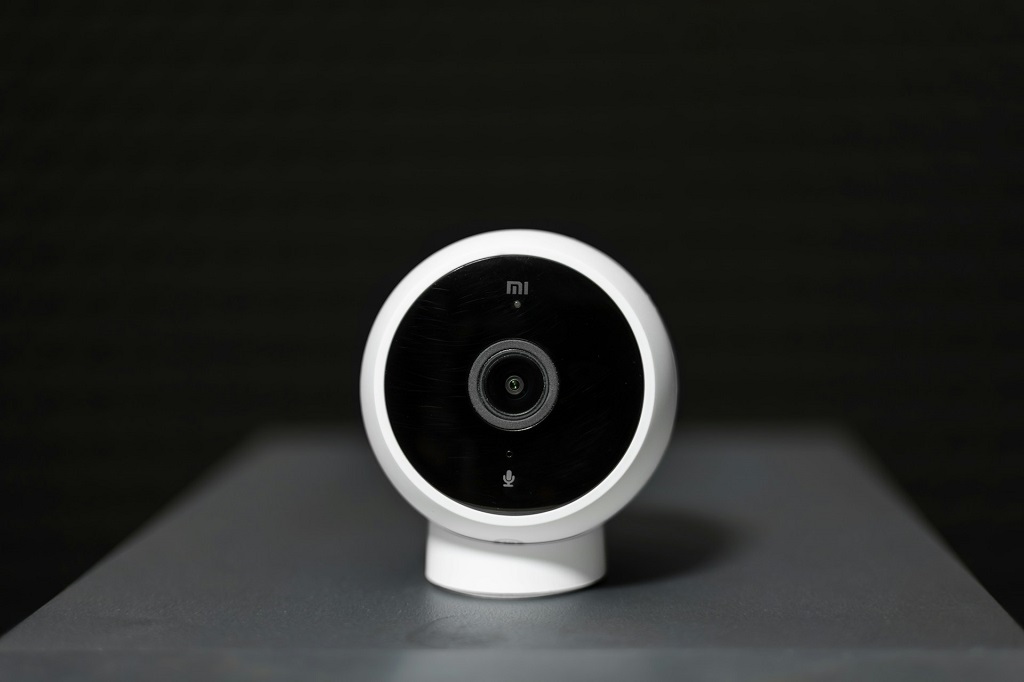
Forget the flashy marketing claims. When you’re choosing the best camera for camming, you’re not just looking at megapixels or brand names — you’re looking for features that actually impact your stream in real time. Here’s what counts when the red light’s on.
Resolution vs. Frame Rate
Don’t get seduced by 4K if your connection or lighting can’t keep up. 1080p at 60fps is the sweet spot — smooth, flattering, and fully supported by most camming platforms. A stable, clear picture beats a glitchy 4K feed every time.
Field of View (FOV)
A wider FOV is great for full-body shows, especially if you move around. Tighter shots (like from DSLRs) are better for close-ups or face-focused streams. Know your content style, and pick accordingly.
Autofocus & Low-Light Handling
Cheap webcams struggle in dim rooms and lose focus if you shift too fast. A good camera tracks your face, stays sharp, and doesn’t blow out highlights. Soft lighting + strong autofocus = that buttery, pro feel viewers love.
Streaming Connectivity: USB vs. HDMI
Webcams use USB — simple. But DSLRs and mirrorless cams often need HDMI output and a capture card like Elgato Cam Link. That’s what unlocks those crisp DSLR streams you see from top earners.
Audio: Important, but Not Everything
Here’s the truth: most cammers use a separate mic. Your camera’s built-in mic is backup — decent, not great. Still, for webcam models streaming in quiet rooms or ASMR-style shows, built-in audio can matter. Just don’t base your whole setup on it.
If you’re shopping for the best camera for web camming, look past the hype. Think about what your audience sees — and what keeps them watching.
Top Camera Models for Camming: The Real-World Shortlist
There’s a huge difference between cameras that look good on paper and ones that actually work when you’re naked, moving, and trying to hold a room full of strangers’ attention. This section is about what works — tested by webcam models, not just reviewers. Whether you’re a daily streamer, a content creator, or someone building a full-blown studio, here are the best picks in each category — with pros, cons, and zero fluff.
Webcams
Logitech StreamCam

Ideal for: Beginners and experienced streamers who want a strong plug-and-play option.
This webcam nails the sweet spot: 1080p at 60fps, USB-C connection, solid low-light performance, and intelligent autofocus. It works straight out of the box and plays nice with OBS, Zoom, Chrome — you name it.
Pros:
- Great image quality for the price
- Reliable face tracking
- Easy integration with all major cam platforms
Cons:
- No 4K
- Needs decent lighting to look its best
Streamer’s note: If you’re switching from a built-in laptop cam, the jump is dramatic. You’ll look instantly sharper and more “present.”
Logitech Brio 4K

Ideal for: Streamers who want ultra-sharp resolution and HDR support.
This one’s a beast in its price class. It shoots in 4K, but really shines at 1080p in HDR mode. The wide field of view is a plus for full-body shows.
Pros:
- 4K support
- Adjustable FOV
- Good in mixed lighting
Cons:
- Autofocus can hunt if you move a lot
- 4K isn’t always supported by cam sites
Streamer’s note: This cam’s great for those who want to future-proof a bit — or who use platforms that compress video less.
Razer Kiyo Pro
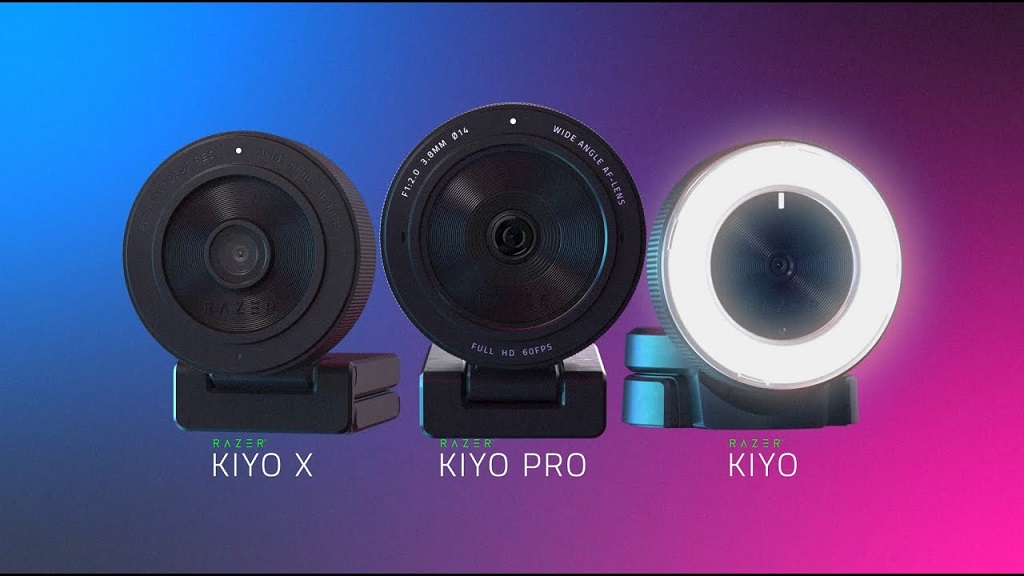
Ideal for: Low-light performers, bedroom setups, moody lighting
This cam is built for ambient streamers — the type who want softer lighting and more atmosphere. The Kiyo Pro handles shadowy rooms well, which a lot of other cams struggle with.
Pros:
- Excellent low-light handling
- 1080p at 60fps
- Wide angle len
Cons:
- Larger than it looks
- Not as intuitive to set up as Logitech options
Streamer’s note: If you use LED strip lights or want a more vibey background, this camera handles it better than most.
Elgato Facecam
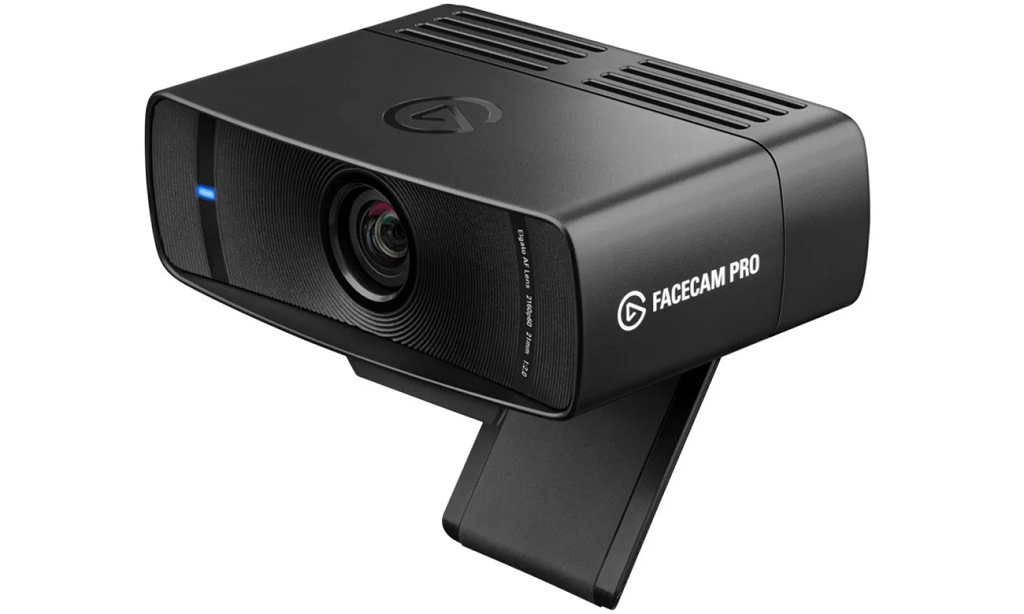
Ideal for: Streamers who want DSLR-like quality without diving into DSLR complexity
Elgato made this one specifically for streamers. No mic, no autofocus gimmicks — just consistent 1080p at 60fps with manual settings that stick between sessions. Think of it as a no-drama camera that behaves the same every time you turn it on.
Pros:
- Extremely crisp image
- Consistent performance
- Great integration with OBS and Elgato software
Cons:
- No autofocus (by design — it’s fixed focus)
- No microphone at all
Streamer’s note: If your lighting is set and you don’t move around too much, this thing makes you look clean, pro, and unfussy.
Mirrorless Cameras
Sony ZV-E10
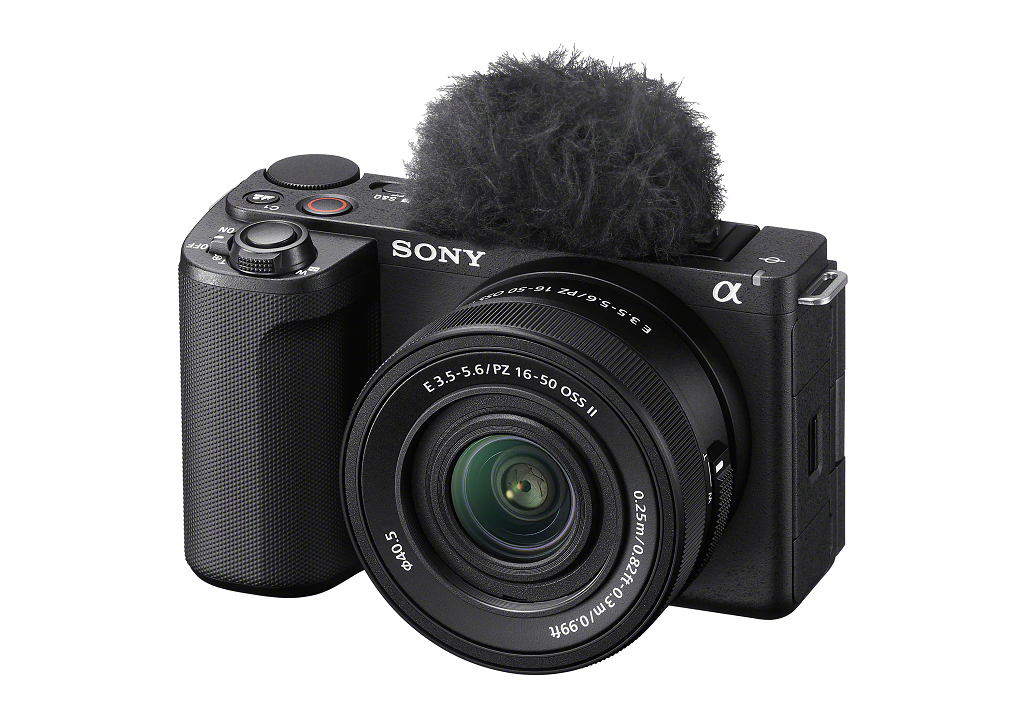
Ideal for: Webcam models who want a step up in quality and content flexibility
The ZV-E10 is a YouTuber favorite — and it holds up beautifully for camming. You get interchangeable lenses, shallow depth of field, and excellent skin tones. Pair it with a 16mm lens and Elgato CamLink, and you’re in business.
Pros:
- Gorgeous image straight out of the box
- Flip-out screen, clean HDMI
- USB streaming option (no capture card required if needed)
Cons:
- Short battery life without dummy adapter
- Slight learning curve for settings
Streamer’s note: It’s perfect for creators who do a mix of live camming, clips, and behind-the-scenes content. If you want to shoot everything in one place, this is the move.
Canon EOS M50 Mark II

Ideal for: Performers who want cinematic softness and Canon’s signature “warmth”
This one’s popular with adult creators and influencers alike. It’s a little slower than the Sony in terms of autofocus, but the image has that soft, flattering feel Canon is known for.
Pros:
- Flip-out touchscreen
- Sharp, creamy image in decent lighting
- Good for stills and vide
Cons:
- 4K crops the frame
- Needs a capture card for best quality
Streamer’s note: This camera is especially flattering for performers who shoot with a lot of natural light and want to soften skin texture without filters.
DSLRs
Canon EOS Rebel T8i
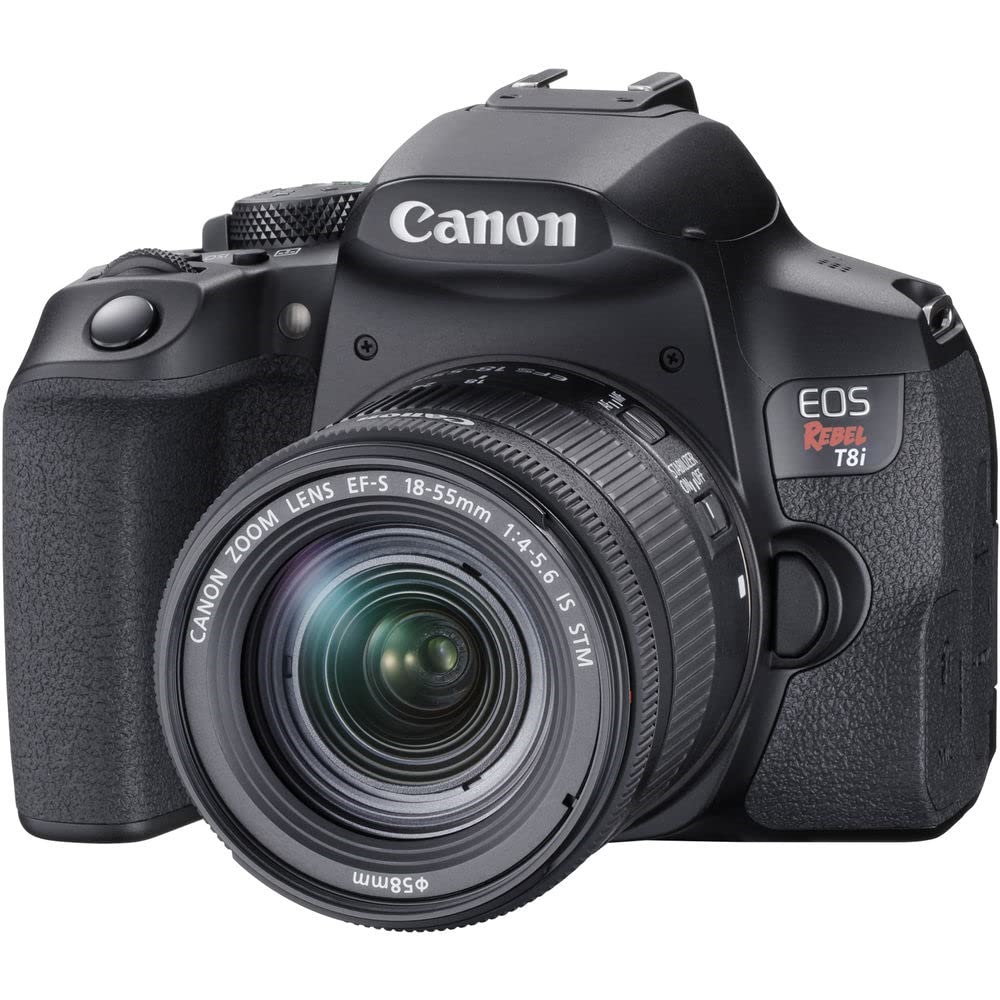
Ideal for: Home studio creators who want polished streams and high-end clips
The T8i gives you everything you need for professional-looking shows: great low-light sensitivity, strong autofocus, and Canon’s color magic. Pair it with a decent lens, and your stream starts to look like a boutique video shoot.
Pros:
- Excellent color and focus tracking
- 1080p at 60fps, plus 4K if you want it
- Huge lens ecosystem to upgrade late
Cons:
- Bulkier than mirrorless
- Requires HDMI capture and dummy battery
Streamer’s note: This is the kind of camera that earns its keep when you’re filming long shows, multiple angles, or high-ticket fan content. It’s not casual, but it pays off.
Nikon D5600
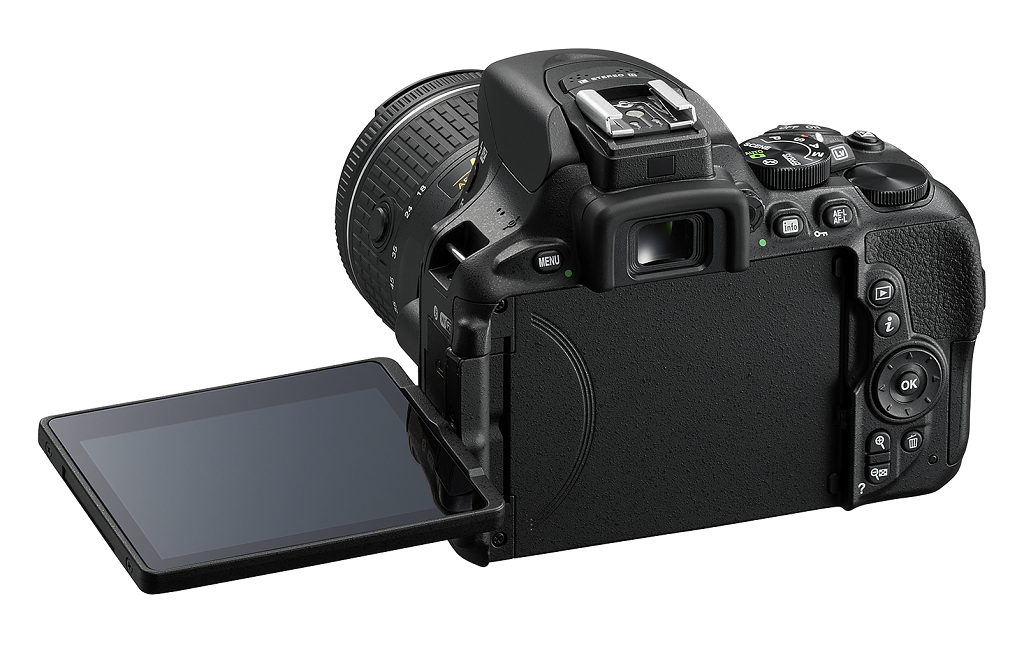
Ideal for: Webcam models who want punchy color and precise control
Nikon doesn’t get enough credit in the camming world. The D5600 offers vivid image quality and a responsive touchscreen interface, with good autofocus for live use. It’s a bit more hands-on, but the output is stunning.
Pros:
- Strong low-light performance
- Easy manual adjustments
- Great dynamic range for skin tone
Cons:
- Needs capture card
- Limited native webcam support
Streamer’s note: If you’re already into photography or video work, the D5600 fits seamlessly into a pro-grade content workflow. It shines with artistic shows and stylized lighting.
Action Cameras
GoPro Hero12 Black
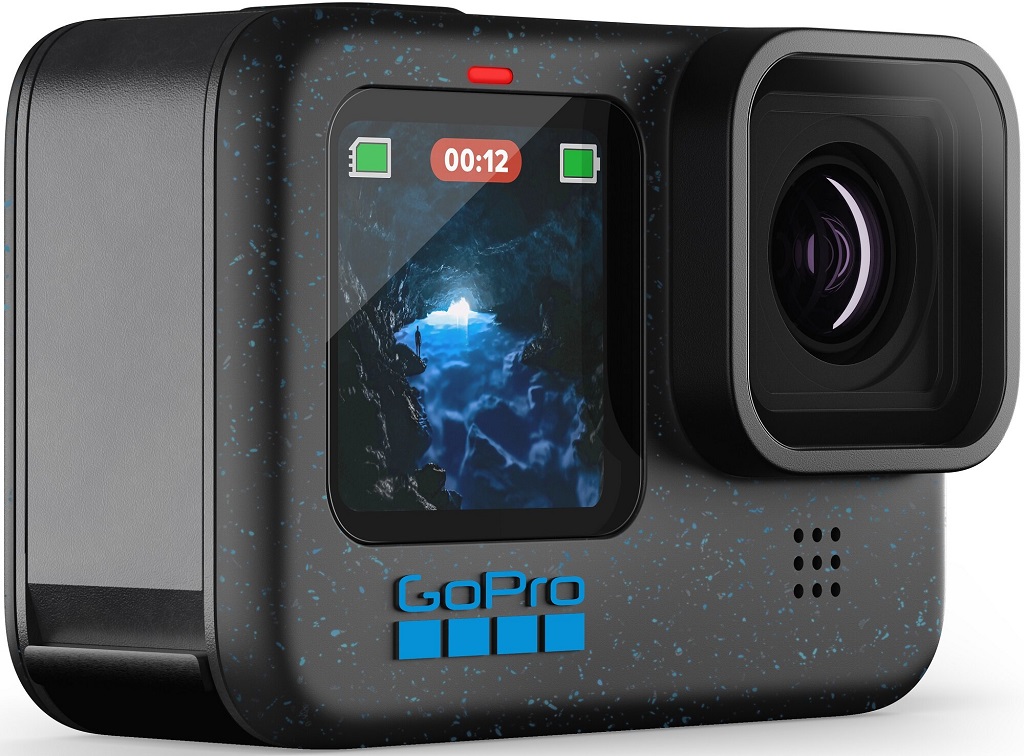
Ideal for: Fitness streamers, shower shows, or creative, movement-heavy content
GoPro’s waterproof body and crazy stabilization make it perfect for shoots you’d never attempt with a DSLR. Mount it to your ceiling, toy, or even body. The latest version improves overheating and stream stability.
Pros:
- Insanely versatile
- Waterproof
- 5.3K and super wide FO
Cons:
- Built-in audio is rough
- Needs rigging for streaming
Streamer’s note: This is your cam if your show involves physical movement, water, or hands-free filming from wild angles. Great for POVs and creative niches.
Insta360 Go 3
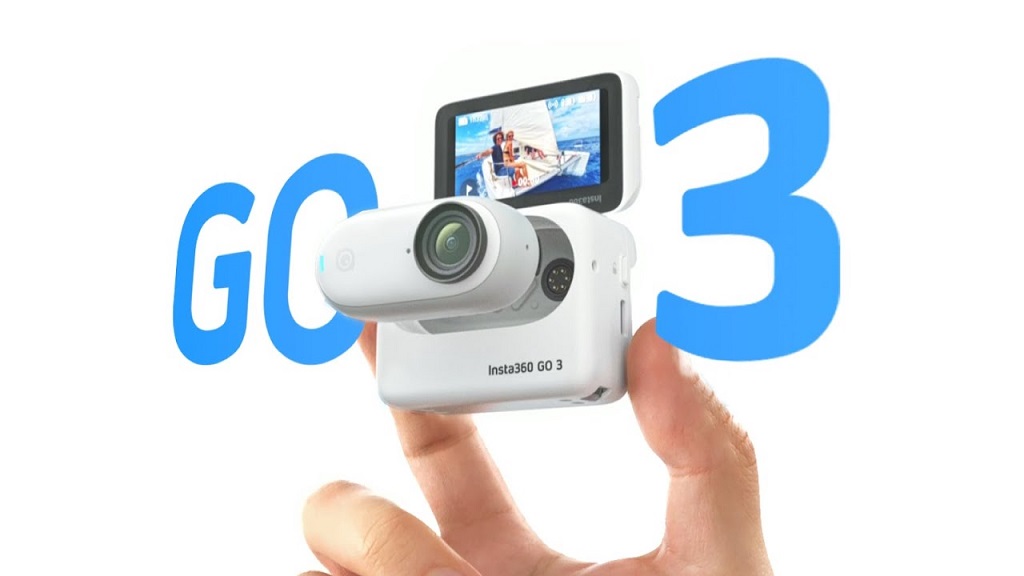
Ideal for: Unique content creators who want compact, wearable footage
Tiny, flexible, and shockingly powerful, the Insta360 Go 3 captures dynamic shots that would be impossible with bigger cameras. You can magnet-mount it to anything and switch between wide and narrow views.
Pros:
- Ultra-light and wearable
- Multiple shooting modes
- Compact and discree
Cons:
- Not designed for traditional streaming
- Low-light isn’t great
Streamer’s note: It’s not your main cam, but it adds spice. Mount it on a toy or capture body angles during play — it’s your secret weapon for content variety.
Together, these models represent the real-world shortlist of the best camming cameras used by performers today. It’s not about the biggest specs — it’s about what fits your setup, your space, and the show you’re trying to create.
Camera Setup Tips: Squeeze the Best Out of Your Gear
Even the best camera for camming will look average without the right setup. Start with lighting — a simple ring light or soft LED panel can instantly make your stream look polished. Harsh overhead lights? Kill them. Your goal is soft, even light that flatters your face and body.
Using a DSLR or mirrorless? You’ll need a dummy battery to avoid shutdowns mid-show, and a capture card (like Elgato Cam Link) to connect it to your computer. Skip those and you’re stuck with limited performance.
Also: don’t neglect your tripod. A $30 mount keeps your camera stable and your framing consistent. Shaky cams scream amateur.
Even small upgrades — like an external mic or background blur — can make your room feel like a full studio. Quality is a combo of camera and setup. Nail both, and you’ll see the difference in tips and viewer time.
Why the Best Gear Deserves a Better Home: Scrile Stream Lets You Build It
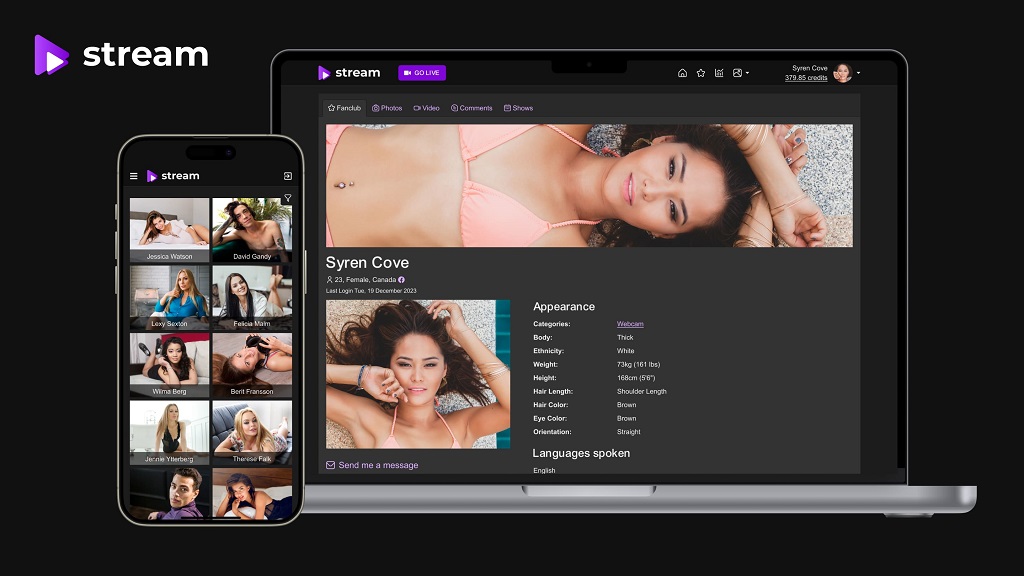
You’ve invested time, money, and effort into getting the best camera for camming. Your lighting is on point, your visuals are crisp, and you’ve dialed in every technical detail — only to stream through a platform that compresses your feed, disables tip-based toy triggers, and plasters its own branding over your content.
That’s not a setup. That’s a compromise. And it’s costing you.
Scrile Stream offers an entirely different approach. It’s not just another cam site — it’s a development solution that lets you launch your own branded streaming platform. You’re not joining a network. You’re building your digital home. Your name, your design, your features — fully customizable.
Here’s what that actually means for you:
- No more compressed video: Stream in high resolution using your full setup, including DSLR or multi-cam configurations.
- Interactive features, your way: Integrate tip-based Lovense toy controls, countdowns, exclusive vibes — whatever works best for your viewers.
- Multi-cam support: Seamlessly switch angles mid-show, whether it’s close-up, full-body, or a GoPro POV.
- Custom monetization: Set your own pay-per-minute rates, run ticketed group shows, sell content — no middleman slicing off your earnings.
- Complete branding control: No more cam site logos or design limits. Build a look that fits your identity and helps you stand out.
- Private fan experience: Offer exclusive shows, loyalty perks, and a fully immersive experience — without platform rules or restrictions.
You’re already creating content at a professional level. You’re using the best camera for camming, the best lighting, the best tools. Why stream like an amateur? With Scrile Stream, you finally get a cam site that’s as professional as you are.
Conclusion: Your Camera = Your Storefront
Think of your camera like a store window. If it’s dusty, dark, or hard to see through — people walk right past. That’s exactly what happens in camming when your video is blurry, laggy, or poorly lit. Viewers don’t stay. And they definitely don’t tip.
Upgrading your camera is a step in the right direction — but it’s only part of the picture. Lighting, framing, stability, and the space you stream in all matter. The best camera for camming isn’t the most expensive one — it’s the one that fits your style, workflow, and space, and helps you deliver a show that feels polished, confident, and real.
And once you’ve got the gear? Make it count. Don’t waste great image quality on generic platforms with low-res players and limited features.
If you’re ready to create a streaming space that actually showcases your setup, reach out to the Scrile Stream team. They’ll help you build your own fully-branded cam site — with high-res streaming, interactive features, custom overlays, and everything else your content deserves.
You’ve invested in your craft. Now invest in where you show it off.
FAQ
What camera do most streamers use?
Most streamers stick with webcams like the Logitech StreamCam or Razer Kiyo Pro for reliable 1080p at 60fps. Those aiming for pro quality often upgrade to the Sony ZV-E10 or Canon M50 Mark II — both strong contenders for the best camera for camming if you’re serious about visual quality and flexibility.
What is the best camera for podcasting
The Sony ZV-E10 and Canon M50 Mark II are two of the best cameras for camming and podcasting alike. These mirrorless models deliver sharp video, support clean audio input, and are ideal for creators who record face-forward content and stream without sacrificing quality across platforms like YouTube, Fansly, or their own sites.
Do I need a 4K camera for streaming?
Not necessarily. Even the best camera for camming won’t shine if your lighting or internet can’t support it. Most platforms limit resolution to 1080p. Unless you’re producing clips outside of cam shows, a smooth, well-lit 1080p stream will outperform unstable 4K every time — both in quality and viewer retention.

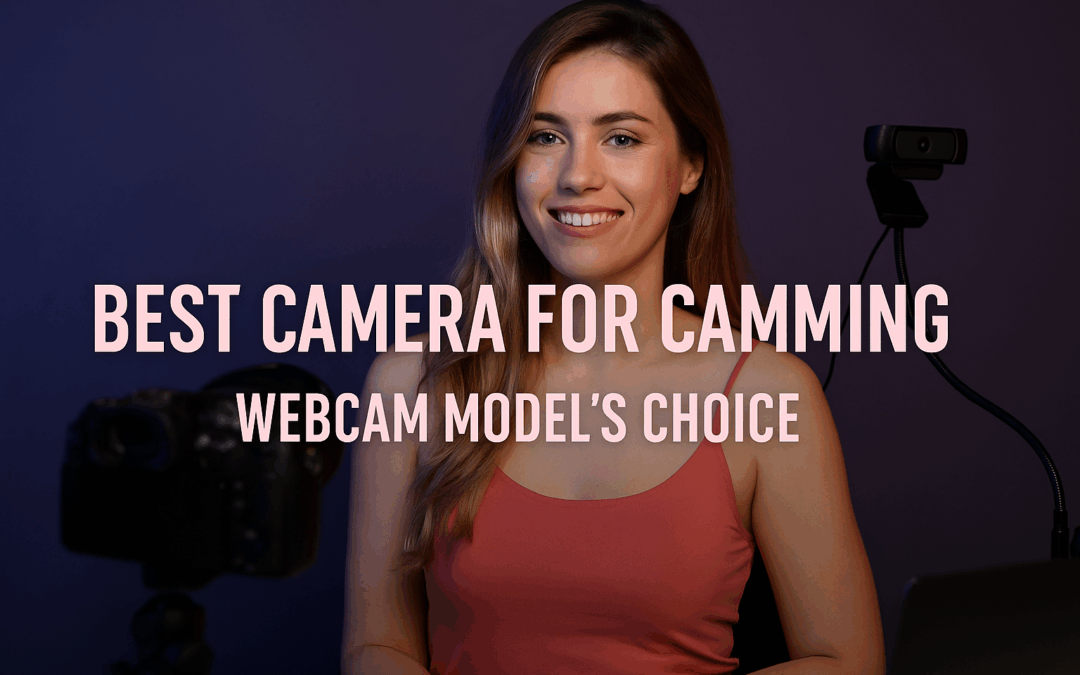
very nice put up, i definitely love this website, carry on it